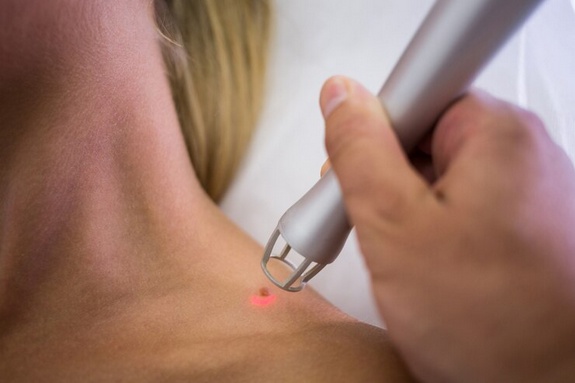Introduction
Epidermoid cysts, though typically benign, can pose unique challenges in terms of diagnosis and treatment. These cysts, often arising from epithelial cells, are filled with keratin and may occur in various parts of the body. This comprehensive guide explores the intricacies of Epidermoid Cyst Treatment, shedding light on diagnostic approaches and breakthroughs in their treatment.
Understanding Epidermoid Cysts
Epidermoid cysts, also known as epidermal inclusion cysts, are non-cancerous growths that develop from cells that form the outer layer of the skin (epidermis). These cysts are encapsulated, containing a thick, yellowish material known as keratin. While usually harmless, they can cause discomfort and, in some cases, become inflamed or infected. Understanding the nature of epidermoid cysts is crucial for devising effective treatment strategies.
Diagnostic Advances: Precision in Identification
Accurate diagnosis is the cornerstone of effective treatment for epidermoid cysts. Recent diagnostic advances have empowered healthcare professionals to precisely identify and differentiate these cysts from other skin lesions. High-resolution ultrasound imaging, complemented by fine-needle aspiration cytology, allows for a non-invasive and accurate assessment of cyst characteristics. This diagnostic precision aids in developing tailored treatment plans and ensures appropriate management.
Surgical Excision: Traditional Approach
The primary mode of treatment for epidermoid cysts remains surgical excision. This traditional approach involves the complete removal of the cyst, including its capsule, to prevent recurrence. While considered a straightforward procedure, surgical excision demands precision to avoid complications such as infection or scarring. Advances in local anesthesia techniques and improved wound closure methods contribute to minimizing postoperative discomfort and enhancing aesthetic outcomes.
Minimally Invasive Techniques
In recent years, there has been a shift towards minimally invasive techniques for treating epidermoid cysts. Laser therapy and minimal excision techniques, often performed under local anesthesia, allow for smaller incisions and reduced trauma to surrounding tissues. These approaches not only contribute to quicker recovery times but also minimize the risk of scarring, making them increasingly appealing for both patients and clinicians.
Corticosteroid Injections for Symptomatic Relief
For individuals with recurrent or inflamed epidermoid cysts, corticosteroid injections may offer symptomatic relief. This non-surgical approach involves injecting corticosteroids directly into the cyst, reducing inflammation and alleviating associated discomfort. While not a curative treatment, corticosteroid injections can be a valuable option for those who may not be suitable candidates for surgery or as a supplementary measure to surgical excision.
Emerging Role of Photodynamic Therapy
Photodynamic therapy (PDT) is emerging as a potential alternative for treating epidermoid cysts, particularly in cases where traditional approaches may be challenging. PDT involves the application of a photosensitizing agent followed by exposure to light, selectively targeting and destroying the cyst cells. Though still in the early stages of exploration, PDT showcases promise as a non-invasive option with the potential for minimal scarring.
Managing Complications: Infections and Ruptures
While typically benign, epidermoid cysts can lead to complications, such as infection or rupture. In cases of infection, antibiotics may be prescribed, and incision and drainage may be necessary. Ruptured cysts may require meticulous wound care to prevent secondary infections. Timely intervention and appropriate management of complications are integral components of comprehensive care for individuals with epidermoid cysts.
Psychological and Aesthetic Considerations
Beyond the physical aspects, the management of epidermoid cysts involves addressing psychological and aesthetic considerations. Individuals may experience anxiety or discomfort due to the appearance of the cysts, especially in visible areas. Clinicians need to acknowledge and discuss these concerns, considering the impact on the patient's quality of life. A patient-centered approach that addresses both the physical and emotional aspects contributes to holistic care.
Conclusion
Unpacking the complexities of epidermoid cysts reveals a multifaceted landscape of diagnostic approaches and treatment modalities. From traditional surgical excision to emerging techniques like photodynamic therapy, the field is evolving to provide more tailored and patient-friendly options. As advancements continue, the focus remains on enhancing diagnostic precision, minimizing invasiveness, and addressing the holistic needs of individuals dealing with epidermoid cysts. Through a comprehensive understanding of these cysts and the continued pursuit of innovative solutions, healthcare professionals can offer effective and patient-centric care, ensuring optimal outcomes for those navigating the challenges posed by epidermoid cysts.


No comments yet